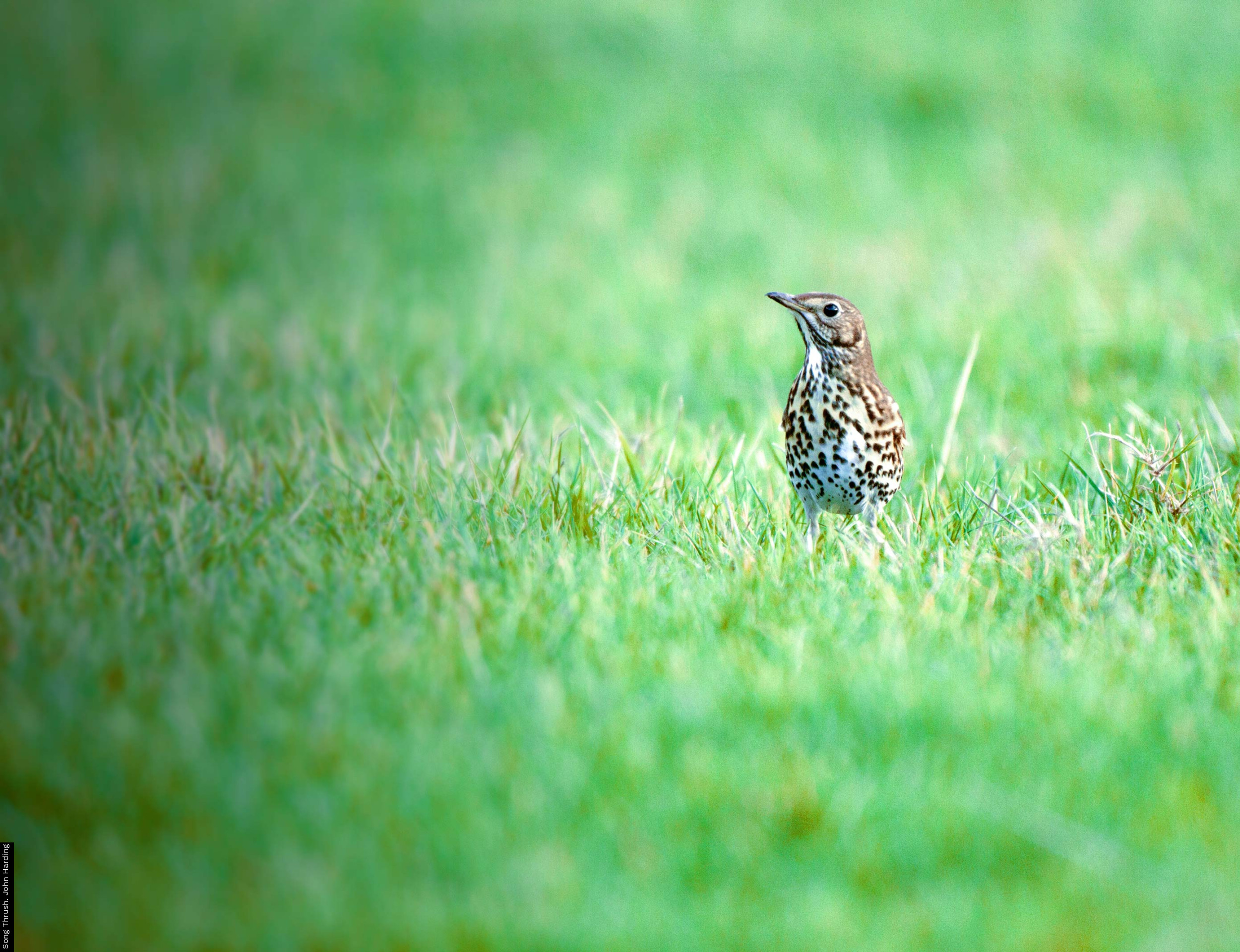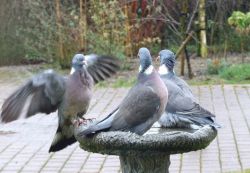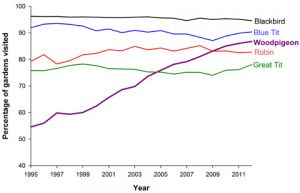Woodpigeons hit record high in gardens
In the real world of twitters and tweets, Woodpigeons are really trending. This year has seen a record percentage of gardens visited by this portly bird.
Woodpigeons are fast becoming the nation’s most spotted garden bird. New results from the year-round BTO Garden BirdWatch survey show that 87% of gardens have been visited during a typical week this year – more than by Robins, Great Tits or House Sparrows.
The march of Woodpigeons into gardens appears to be unstoppable. Nationally, only Blue Tit (90%) and Blackbird (95%) now stand in their way from taking top spot. In some areas, including Hertfordshire, Nottinghamshire, Warwickshire, The West Midlands and West Sussex, it appears that Woodpigeons are already top of the podium.
Their growing success in gardens is likely to have been caused by several factors. In the countryside, increased production of oil seed rape has provided fresh ‘greens’ to eat throughout the winter. Increased numbers here appear to have spilt over into gardens, where plentiful food and nesting opportunities are being utilised.
BTO can also reveal that Woodpigeons are reaching deep into our towns and cities, now being seen more often in suburban than in rural gardens. Despite bringing a welcome sense of the countryside with them, their large appetites make Woodpigeons divisive garden guests.
There are steps that householders can take, however, to ensure that there is enough food left over for smaller birds. Feeder sanctuaries, for example, which are metal cages through which smaller but not larger species can pass to access food contained inside, are a useful tool. Smaller perches might also dissuade Woodpigeons from trying to act like a Blue Tit on hanging feeders.
There is also much to love about this quirky species. Did you know, for example, that Woodpigeons are one of very few bird species that produce crop milk – which is similar to mammalian milk – to help them rear their young? They are also true breeding champions, having been recorded nesting in every month of the year!
Want more garden bird news? Sign up to our free monthly e-newsletter.








Share this page